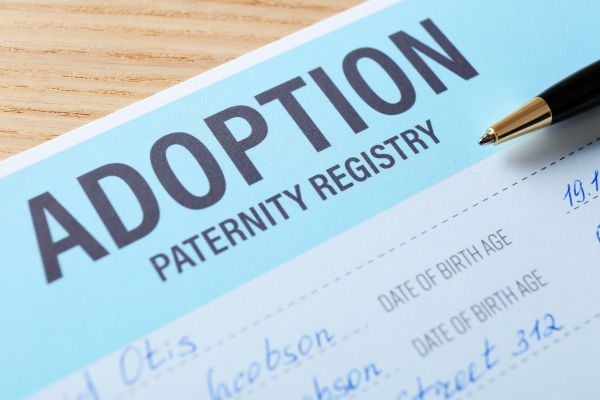Paternity testing and custody are two topics deeply intertwined in family law, often carrying emotional and legal implications for parents and children alike. When questions of a child’s biological parentage arise, they can significantly influence custody decisions, support obligations, and parental rights. Understanding how paternity testing works and its role in custody cases is essential for anyone navigating this complex terrain.
Understanding the Connection Between Paternity Testing and Custody
Paternity testing, at its core, is a scientific method used to establish a biological relationship between a father and a child. In legal contexts, it serves as crucial evidence in determining parental responsibilities. When disputes over child custody emerge, the results of a paternity test can shape the outcome in profound ways. Courts rely on this evidence to protect the best interests of the child, ensuring that the right parent is granted custody, visitation rights, and the obligation to provide financial support.
Many custody battles arise from uncertainty about a child’s paternity, leading one or both parties to request DNA testing. Once paternity is confirmed, the father may gain legal recognition, enabling him to pursue custody or visitation. Conversely, if paternity is disproven, a man may be relieved of legal obligations, such as child support.
The Legal Importance of Establishing Paternity
Establishing paternity goes beyond confirming a biological relationship. It creates a legal bond that carries rights and responsibilities. For fathers, proving paternity can mean gaining the right to be involved in the child’s upbringing, to make decisions about education and healthcare, and to maintain a meaningful relationship. For mothers, it ensures they can seek child support and share parenting duties.
Courts consider paternity as a foundational element in custody cases. Without it, a man has no legal standing to request custody or visitation. This is why paternity testing often becomes a pivotal step in custody disputes. The results influence how judges craft parenting plans that prioritize the child’s emotional and physical well-being.
How Paternity Testing Influences Custody Outcomes
When paternity testing confirms a man as the biological father, he gains the legal right to be part of custody proceedings. This does not automatically guarantee primary custody but opens the door for him to seek shared or full custody depending on circumstances.
Judges weigh several factors in custody decisions, including the child’s existing relationship with each parent, stability of the home environment, and the ability of both parents to meet the child’s needs. Paternity results simply establish who has the right to participate in these considerations. In some cases, a father may also use paternity confirmation to challenge a mother’s sole custody claim or to secure visitation rights if previously denied.
Alternatively, if testing excludes a man as the biological father, he may be removed from custody and support obligations unless he has already established a legal parent-child relationship through adoption or acknowledgment. This underscores why timely paternity testing is critical.
Voluntary vs. Court-Ordered Paternity Testing
Paternity testing can occur voluntarily when both parties agree to establish parentage. In such cases, the process is often smoother, and the results can quickly be presented in court. However, when disputes arise, one party may petition the court for an order requiring DNA testing.
Court-ordered paternity tests are conducted under strict legal procedures to ensure accuracy and admissibility. Accredited laboratories handle these tests, and chain-of-custody protocols are maintained to avoid tampering or challenges to validity. Once the results are in, they become a key piece of evidence in determining custody arrangements and child support obligations.
Emotional and Practical Considerations
Beyond the legal aspects, paternity testing and custody battles carry significant emotional weight. Children benefit from knowing their biological origins, which can contribute to their sense of identity and emotional health. However, the process can also bring conflict and tension between parents, making it essential to approach these situations with sensitivity and focus on the child’s best interests.
For parents, understanding their rights and responsibilities is crucial. Seeking legal guidance early can help navigate complex issues, ensuring both parties are prepared for the implications of paternity testing in custody proceedings.
Moving Forward After Paternity Is Established
Once paternity has been legally established, the next steps involve working out custody and support agreements. Courts often encourage parents to develop a parenting plan collaboratively. If they cannot agree, the court will intervene and create a plan based on the child’s welfare.
Establishing paternity also opens the possibility for the father to seek equal parenting time, shared decision-making, and a stronger bond with the child. For mothers, it provides assurance that the father shares in the responsibilities of raising their child, both emotionally and financially.
Conclusion
Paternity testing and custody are closely connected aspects of family law, with the potential to impact the lives of parents and children for years to come. Whether pursued voluntarily or through a court order, establishing paternity lays the foundation for fair and responsible custody decisions. It ensures that children receive the support, care, and connection they deserve from both parents.
Navigating paternity and custody issues requires not only legal knowledge but also compassion and foresight. By understanding the role of paternity testing, parents can approach custody matters more informed and better equipped to protect the best interests of their children.
